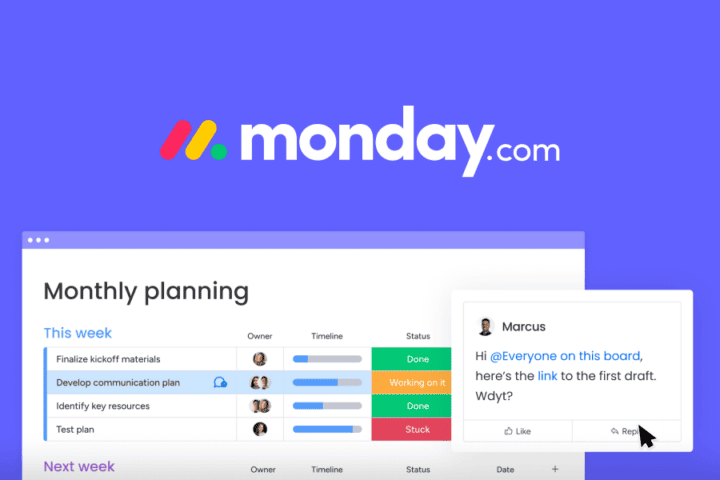The market is competitive. In addition, with the exponential increase in remote work, companies have begun to pay more attention to employee satisfaction levels. All in an effort to retain high-performing workers. But in order to achieve this, it is necessary to change the strategies of face-to-face work and provide an organized IT environment. Let’s explore how it is possible to improve employee satisfaction through HR management tools.
Remote work is here to stay
A survey of more than 400 HR managers found that many organizations will never go back to the office environment. Even after the COVID-19 pandemic is over.
The report revealed that ½ of the leaders surveyed anticipate increasing the number of employees working permanently remotely in the next 2 years. 25% reported that the number of employees who will permanently work remotely will double during that same period. (Terminal, Remote Leadership Report, 2020)
This leaves us to see that organizations will continue to face workflow challenges for their remote processes. It is no secret that while the COVID-19 pandemic may be over, it has already had a profound and permanent impact on the way we work. For organizations to succeed in this environment, they must find ways to implement efficient processes. And they must deliver superior customer and employee experiences.
Information technology (IT) processes are still new, and many organizations lack experience in managing them. According to another report, 37% of organizations lack a centralized way to manage their organizations’ remote processes. Among them one of the most important: HR management.
Employee satisfaction is at risk

Recent HR research has provided compelling evidence of the benefits that satisfied workers provide for their organizations. Job satisfaction statistics highlight the fact that happy employees really do make a difference in any company.
However, in the remote environment, there are ongoing issues that could put employee satisfaction at risk. According to an Offvibe survey: only 25% of employees who quit their jobs cite money as the main reason for leaving.
89% of employers think that employees leave for financial reasons. However, employees leave their jobs for more varied reasons than just unsatisfactory pay. Poor HR management could be one of those reasons contributing to employee dissatisfaction. We will briefly describe 2 important points of HR management that currently affect employee satisfaction:
Management in the onboarding process (Onboarding)
Onboarding is a critical part of talent attraction and retention. With the trend toward the collaborative economy, people are less likely to stay in a job for the long term. This makes recruiting and retaining quality staff a major challenge for HR departments.

In addition, the ongoing stress of the hiring process or paperwork delays discourages very good prospects. 2. 6 out of 10 managers have had an employee leave during the probationary period due to poor onboarding.
Studies show that 43% of employees leave in the first month due to poor onboarding practices. This highlights the important role that onboarding plays. Because it has an impact on integrating new employees into the organization and meeting basic HR needs.
By deploying HR management tools it is possible to make onboarding a smooth and more organized process. New employees who are part of a well-structured onboarding orientation program are 82% more likely to stay with the company for up to three years.
Such management tools can enable companies with long recruiting lists to achieve a faster process. Many companies waste significant time collecting resumes. Using a complicated email filtering system and a spreadsheet where they manually add applicants’ names to track progress.
Putting technology on our side to use automated HR management tools can allow this entire process to be in one system. Significantly reducing manual processes, spending less time finding all the information and trying to organize it for evaluation.
Communication failure and deficit in attention
According to job satisfaction statistics, 86% of employees and employers think that workplace failures are due to lack of communication and collaboration. 45% of new employees ask to go elsewhere (or leave) when they have a bad day at the office.

A communication breakdown or failure to respond to one of their human needs in a timely manner is enough to discourage the best of them. Even those who come to work eager to overcome challenges, solve problems and achieve goals.
Understanding employees as individuals is key to any organization. But this is not possible when an employee finds it difficult to convey his or her needs. As well as knowing their responsibilities and legal benefits, and requesting due time off or sick time. All this is possible using HR management technology tools. Because these give room for continuous feedback from peers and superiors, and private communication.
One of the best ways to keep employees happy is to show interest in them. In addition, there are tremendous advantages to ensuring that the onboarding process is modern and follows best practice guidelines. For example, employers can improve the long-term prospects of a new team member. And thus avoid the pitfalls of making constant replacements.
Effective HR management tools
When people are satisfied with their work, they have good communication with their superiors and peers. In addition, they set clear goals and are motivated to achieve great results. Teams that work in companies and foster a culture of high engagement are a great benefit. They mean productivity, better customer engagement, improved employee retention and a 21% increase in profitability. (Gallup engagement statistics).
This is why technology has come to offer solutions in the HR area. And that’s why there are tools like Freshteam’s HR software. Designed to help any organization, manage hiring and onboarding. Plus time off, employee data and HR workflows in one place.



